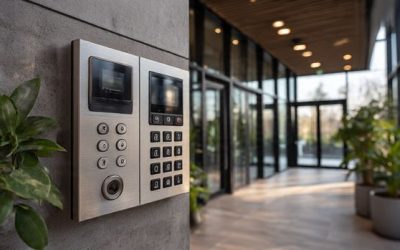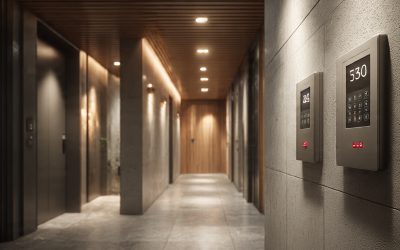The rise of home security technology has sparked a common neighbourly dispute across Sydney suburbs: CCTV cameras overlooking adjacent properties. While installing security cameras offers valuable protection against intruders, it’s raised valid privacy concerns when these electronic eyes peer into nearby backyards.
Recent statistics show anincrease in home CCTV installations across Australian metropolitan areas, driven by:
- Affordable wireless security cameras
- Advanced monitoring capabilities
- Rising property crime rates
- Remote viewing through smartphones
This surge in residential CCTV camera systems has created tension between homeowners’ rights to security and their neighbours’ expectations of privacy in personal outdoor spaces. Many Aussies now question whether it’s legal for nearby security cameras to capture footage of their backyard activities – from family barbecues to children playing in the pool.
Understanding the Legal Aspects of Neighbours’ CCTV Cameras
Australian privacy laws establish specific guidelines for residential CCTV camera installations. The Surveillance Devices Act varies by state and territory, setting different requirements for video surveillance equipment.
Key Legal Requirements for CCTV Installation:
- Cameras must not record audio without explicit consent
- Clear signage indicating CCTV operation must be displayed
- Footage must be stored securely and accessed only for legitimate purposes
- Recording of private spaces requires documented consent
The law recognises a distinction between capturing incidental footage of neighbouring properties and deliberately recording private spaces. Your neighbour’s cameras should be positioned to monitor their own property, with minimal overlap into adjacent areas.
Recording Restrictions in Private Spaces:
- Direct surveillance of private areas like bathrooms, bedrooms, or changing areas is prohibited
- Intentional recording of neighbouring backyards may constitute a breach of privacy
- Footage captured must serve a legitimate security purpose
Local councils often require development applications for certain CCTV installations. Professional security companies in Sydney ensure compliance with these regulations through proper camera placement and configuration.
The Privacy Act 1988 provides additional protections against unauthorised surveillance. Homeowners can request access to footage containing their personal information and lodge complaints with the Office of the Australian Information Commissioner if privacy concerns arise.
Evaluating Your Privacy Rights as a Homeowner
Australian homeowners have specific rights to protect their privacy within their property boundaries. These rights extend beyond the inside of your home to include outdoor spaces like backyards, pools, and entertainment areas.
Key Privacy Rights for Homeowners:
- The right to enjoy your property without being watched
- The power to ask your neighbours to change their security systems if they invade your privacy
- Protection against someone intentionally recording your private activities
- Control over how personal information from surveillance devices is collected and used
Your property rights allow you to:
- Put up privacy screens or barriers
- Report privacy violations to local authorities
- Ask for mediation through dispute resolution services
- Take legal action if needed
The idea of reasonable surveillance boundaries is important in deciding what practices are acceptable. While property owners can put up security cameras, these installations must respect the privacy rights of their neighbours.
Acceptable Surveillance Practices:
- Cameras mainly focused on your own property
- Recording shared boundaries for security reasons
- Watching public areas that can be seen from your property
- Security measures that don’t intentionally capture private spaces
Knowing these rights helps homeowners keep their privacy while also considering the security needs of their neighbours. Finding a balance between property surveillance and respecting others’ privacy creates friendly relationships in the neighbourhood and protects everyone’s interests.
Assessing the Impact of Neighbours’ Security Cameras on Your Privacy
A reasonable expectation of privacy in your backyard varies based on several factors:
Physical Layout Considerations:
- Height of existing fences
- Distance from neighbouring properties
- Natural screening from trees or structures
- Direct line of sight from adjacent buildings
The concept of public visibility plays a crucial role in determining privacy expectations. Areas visible from public spaces—like streets or parks—naturally have reduced privacy protection compared to secluded spots within your property. This becomes especially relevant when using wi-fi cameras, indoor cameras, or wire free security cameras that can be mounted in discreet or elevated locations.
Key Privacy Impact Factors:
- Camera positioning and angle
- Recording capabilities and recorded video access
- Zoom functionality
- Night vision features such as infrared LED or color night vision
- Storage and access protocols like local storage or free cloud storage
Wireless CCTV camera systems pose additional privacy challenges due to their:
- Flexible mounting options, including stick up cams like the Ring Stick Up Cam or Eufy security cameras
- Remote control and ability to access the camera remotely
- Potential for data interception if not secured
- Easy repositioning without notice, particularly for cam battery or rechargeable batteries models
Your reasonable privacy expectations diminish in areas clearly visible to neighbours through normal daily activities. A private BBQ area hidden behind a 2-metre fence warrants stronger privacy protection than a front garden visible from the street.
The presence of existing surveillance, such as council cameras or business security systems, can also influence the baseline privacy level in your neighbourhood. These established monitoring systems, often featuring leading brands like Google Nest Cam, Ring Stick, or Eufy Security, help set precedents for what constitutes acceptable surveillance. Features such as motion sensors, facial recognition, pan tilt controls, or use of solar panels and power cables further diversify security camera options, ensuring homeowners can find affordable cameras with high video quality, strong audio quality, and the latest technology to meet their needs—whether for a baby monitor, indoor cam, or general outdoor security.
Taking Action Against Invasive Neighbourhood Surveillance
Privacy infringements from CCTV cameras often manifest through specific behaviours. Here are clear signs your neighbour’s surveillance system might be crossing legal boundaries:
- Direct Angle into Private Spaces: Cameras deliberately positioned to capture footage of your bedroom windows, pool area, or children’s play spaces
- Zoom Capabilities: Use of advanced zoom features to record detailed footage of your property
- Audio Recording: Surveillance systems with active microphones that can pick up private conversations
- Continuous Tracking: Cameras that follow your movements throughout your property
When faced with these privacy violations, Australian homeowners have several legal options:
- Document the Intrusion
- Take photos of camera positions
- Keep a detailed log of incidents
- Record any relevant conversations with neighbours
- Local Council Intervention
- Lodge a formal complaint
- Request mediation services
- Apply for council assessment of the situation
- Legal Proceedings
- File for a restraining order
- Seek damages through civil court
- Request court-mandated camera repositioning
The Surveillance Devices Act provides specific protections against unauthorised recording. Homeowners can engage legal professionals specialising in privacy law to pursue these matters through appropriate channels.
Practical Measures to Enhance Your Backyard Privacy
Creating physical barriers offers immediate protection from unwanted surveillance. A well-designed timber fence reaching 1.8 to 2.1 metres can block direct camera views while maintaining your yard’s aesthetic appeal.
Strategic Landscaping Choices
Strategic landscaping choices add natural privacy shields:
- Fast-growing screening trees: Bamboo, Lilly Pilly, Leighton Green, Photinia Red Robin
- Layered vegetation approach: Tall trees for upper coverage, dense shrubs at mid-level, climbing plants on existing structures
Flexible Coverage Options
Retractable shade sails and privacy screens provide flexible coverage options for specific areas. Installing trellis extensions atop existing fences adds extra height without major construction. These physical barriers work together to create multiple layers of privacy protection in your outdoor space.
Seeking Professional Help for Ongoing Privacy Issues with Neighbours’ Home Security Cameras
Legal guidance becomes essential when neighbourly discussions about CCTV privacy concerns reach a stalemate. A qualified attorney specialising in property and privacy law can assess your situation and outline available legal options.
Before pursuing legal action, consider these alternative dispute resolution paths:
- Engage a professional mediator to facilitate constructive dialogue
- Request assistance from your local council’s dispute resolution service
- Contact your state’s privacy commissioner for guidance
When seeking legal counsel:
- Document all previous attempts to resolve the issue
- Collect photographic evidence of camera positioning
- Keep records of any correspondence with your neighbour
- Note specific instances of privacy breaches
Professional legal advice helps determine whether your neighbour’s CCTV setup breaches Australian privacy laws and guides you through appropriate legal channels to protect your privacy rights.
Improve Your Home Security System Today
Finding the right balance between home security and privacy remains crucial in today’s surveillance-driven world. While CCTV cameras and security camera systems serve as valuable tools for protecting our properties, their installation must respect neighbours’ privacy rights and comply with Australian regulations.
Professional security providers like Alpha Security Corp. specialise in designing and installing compliant outdoor security cameras, wireless cameras, and indoor and outdoor cameras that protect your property without infringing on others’ privacy. Whether you’re after battery powered cameras, infrared night vision, or smart features like motion detection and two-way audio, our team of experts can help you choose the best security cameras for your needs. We ensure each system offers high quality video, long battery life, and secure cloud storage or local video storage, depending on your preferences.
Many of our systems offer remote access, night vision range, and compatibility with smart home setups through dual band Wi-Fi. We’ll also guide you on how wireless security cameras work, how to connect wirelessly, and how to position your cameras to detect motion while maintaining privacy boundaries.
Ready to enhance your home security responsibly? Contact Alpha Security Corp. for a professional consultation on safe, legal CCTV camera installations that respect both your security needs and your neighbours’ privacy.










